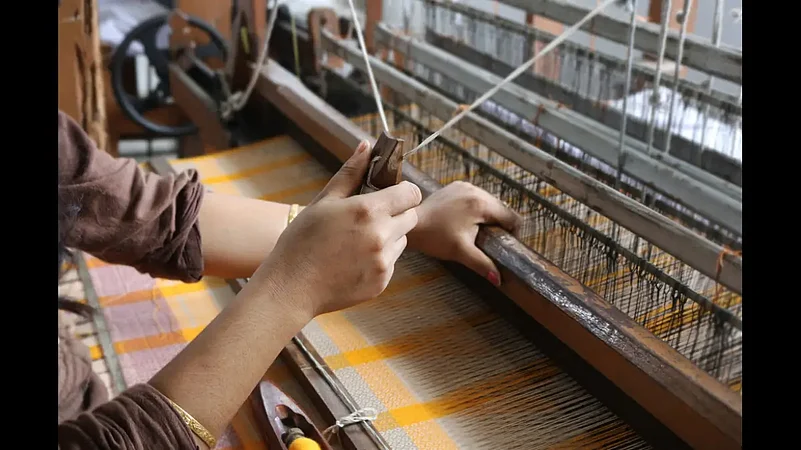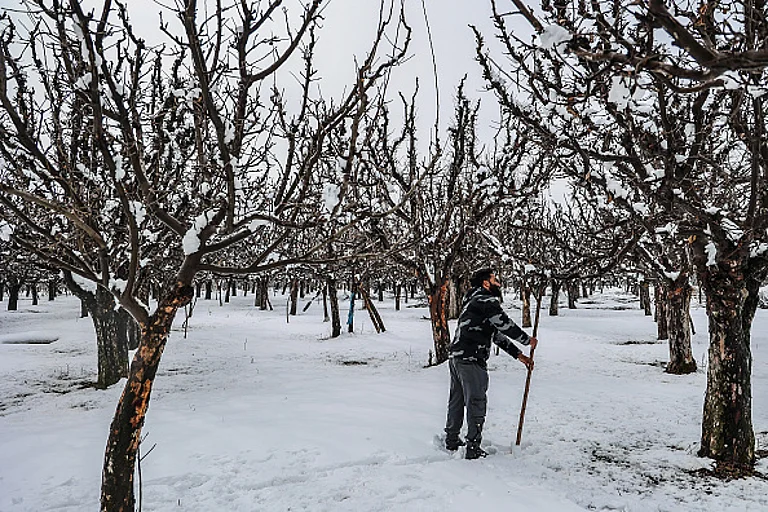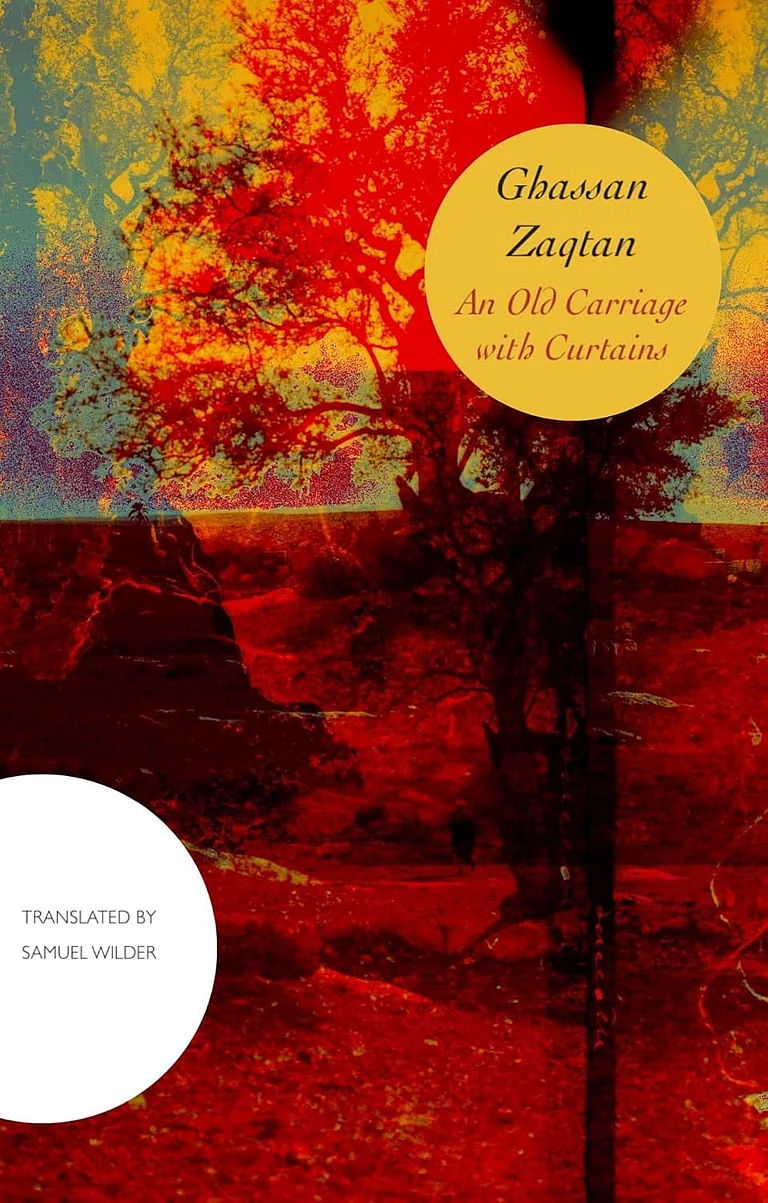“I speak the language of weaving,” said Archana Shah, the only time I caught a hint of pride in her voice in the almost hour-long interview. “The weaver and I may not speak the same tongue but we strike a chord immediately because they soon realise I understand their work.”
An alumnus of India’s prestigious National Institute of Design (NID), Shah developed a keen interest in the traditional craft skills of indigenous artisans and travelled across India, to the remotest corners, to learn about the weaving, dyeing, printing, embroidery and ornamentation techniques practised by different communities.
Shah started her own clothing line, Bandhej, which focuses on traditional textile skills, and offers a range of eco-friendly, handcrafted clothing for women. In 1985, she opened her first store. In 2013, Shah published her first book, Shifting Sands, Kutch: A Land in Transition. The book is an outcome of her travels through Kutch, an association since 1976 with the land, the people and their textiles.

She is an avid traveller even today. Her latest book, ‘Crafting A Future – Stories of Indian Textiles and Sustainable Practices’ (published by Niyogi Books) is the result of her many travels throughout the length and breadth of the country to demonstrate the diversity and true value of India’s handcrafted textile processes.
Padma Shri Laila Tyabji, social worker, designer, writer, and craft activist and one of the founders of Dastkar, a Delhi-based non-governmental organization, working for the revival of traditional crafts in India, writes in her foreword to the book – “This is a scholarly book, not a casual coffee-table conversation piece, but it is also a riveting travelogue… The thread running through the book is her [Shah’s] deep love and understanding of our textiles, and the people who craft them, as well as the sector’s incredible diversity and splendour.”
In a recent interview, Shah talked about her travel schedule, about women in the handloom sector, about sustainable practices and how the handloom sector can be revived.
‘Crafting A Future’ not only covers most states of India but also remote corners and little known crafts. How did you manage to handle this project along with your other schedules?
I travelled for over two years for this book.
Since the 1990s, there has been a buzz that the younger generation were not interested in continuing with the family tradition of handloom weaving because it was not a gainful occupation. They were educated and wanted to do better. If a handloom weaver does not earn at least the prescribed minimum wage, why will they continue? Some even pointed out that an unskilled labourer in the construction sector earned much more than a handloom weaver.
So I thought I should travel around the country, talk to the weavers and see for myself, learn about their aspirations. Find out if they wanted to continue in this trade.
I travelled off the beaten track, went out of my comfort zone so to say. And I travelled with an open mind. I would spend half the month travelling. No matter how remote the craft centre was, I would travel with lots of time on hand. Wherever I found something of interest, I wanted to spend enough time to sit and talk with them at length. Understand their circumstances, even share their meals. For them, it is not just textile, it is a way of life. If you are on a tight schedule, sometimes these things are not possible.
Then COVID-19 happened. It gave me time to think and understand all that I had learned. It gave me the time to write the book.
What was your takeaway from the travels? Was the younger generation really keen to move away?
I have been working in this field for almost 40 years now. I found the younger generation has realised the worth of the legacy. It is also easy to talk to them. They are educated and hence open to ideas.
Is the handloom sector male dominated? Have you seen women take a leading role?

Usually spinning is done by women. In the seven sister states in north-eastern India, it is women who work at the looms. But generally speaking, for the rest of the country, traditionally, men work at the looms. For some handlooms, where intricate work is needed, say for Jamdani or Patola, I have seen couples working on the loom together. Some areas may have women working at the looms, like I found in Kota. But generally it is men who work at the looms.
But during my travel, I did notice some change. Now many women are demanding they be paid for the work they do. The logic being if the weavers were paying a third party to work for them – say making of bobbins – then they might pay the women to do the same work.
Let me narrate an interesting story here. In my earlier visits to Kutch, I never saw a woman working on the loom. Shyamji, a weaver with whom I have worked for many years, this time took me to a village in Kutch where he said were 200 looms at work. The number itself was a surprise. And when I went there, I found young woman working on the looms. I could see they enjoyed the empowerment. In fact, it was young men who I found loitering.
Can you tell us something about the sustainable practices that impressed you?

I had gone to Meghalaya to visit a village where people were known for making and using natural dyes. One of the women narrated an interesting story which will highlight how sustainable practices are coming back.
The weavers had been using natural dyes traditionally. But a few years back, government officials advised them to use chemical dyes which would help them widen their colour palette and make more interesting patterns. The weavers were happy at this chance to grow their earnings. So they agreed and soon received their stock of chemical dyes. However, they were not advised about the use of gloves and protective gear. Soon the women working with the dyes began to complain of itching palms, a burning sensation. They realised the chemical dyes were toxic nature. They also realised that the toxic water was running off to the kitchen gardens, something which most homes in these areas are known to have. The vegetables were also getting toxic. So they decided to go back to their old ways of making natural dyes.
Craftspeople are quick to learn. They have now learned how to standardise the natural dyes and also to broaden the colour palette.
Or take the case of Ajrakhpur in Gujarat. After the village of Dhamadka was damaged heavily during the 2001 earthquake, the villagers were rehabilitated to Ajrakhpur. [The place takes its name from the block printing traditionally done by the artisans here, which is known as ‘ajrakh’. ] The craftspeople had been using napthol-based dyes for a long time. But after a few people in the village, including Ismail Khatri, who got his PhD for his understanding of the craft, got cancer, the people were concerned. They realised the napthol-based dyes were not good for their health. So finally they decided to revert to natural dyes. Some of them already knew about it, others learned the process. They even built tanks in steps to ensure the flowing water to wash their printed textiles. The water is so clean that it is used to water the crop fields.
Are Indian fashion designers using Indian handloom in their work?
If you consider that the number of handloom artisans in the country number 30 million, then how big is the community of fashion designers? A handful. So they can only do so much. But what they have achieved is drawing people’s attention to the Indian handlooms. So there is a lot of conversation about Indian handlooms now. That is a great role that the designer community has played.
What do you think needs to be done to turnaround the handloom sector?
One of the design challenges is that all artisans do not have the same skill set. A Jamdani artisan is very highly skilled. But not someone who makes plain cotton fabrics. So the challenge is to devise useful products that the artisans can make based on their skill.
We need to ensure that the handloom fabrics have great tactile feel and a unique quality, something that power loom products cannot replicate easily.
We have to understand, a handloom product has to be interesting enough to attract the consumer. The handloom sector, if managed properly, can generate millions of dignified work opportunities, even eliminate the need to build one large industry at times. But the consumer will not buy a product because you are creating jobs. They will buy it because they like it. So it is necessary to ensure that fabrics are special and of good quality to justify the minor price difference between mechanised production and unique, handcrafted textiles.
We have to build stories – real stories – around the products. It can be about how eco-friendly the products or how the production process has a low carbon footprint, etc. Then people will appreciate the product and feel compelled to buy them.
Our readers are passionate travellers. How can they help in reviving the handloom sector?
Buy more handlooms. Indian textiles have been admired around the world over generations. Most museums around the world showcase Indian textiles and we are fortunate, our artisans continue to have the skills to recreate these heritage textiles as well as create contemporary textiles for varied markets. There is hardly any place which does not have its own typical handloom. Each region offers its own unique textile techniques and skills, patterns, motifs, fibres and fabrics. So travellers can buy these products, may be even visit the art clusters. Here too, stories about the speciality of the regional handlooms can be created so that anyone visiting the area would want to possess at least one piece of the product.


























